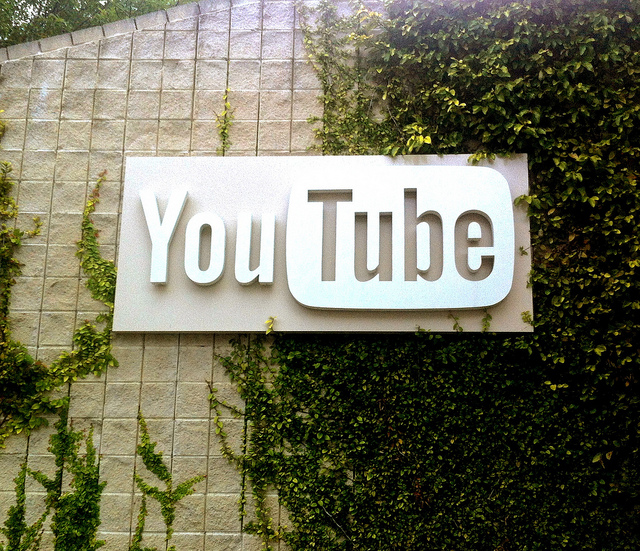Blog
Top 17 in Purposeful Branding for 2017: The We First Year in Review

In the days before the internet, ad buyers carefully selected the right placement for their clients’ corporate messaging to ensure that an advertisement wasn’t at odds with featured content. In other words, a marketer wouldnt place a candy ad next to an article about avoiding cavities. This still holds for print, television and radio today. Yet, with the onset of online media, programmatic marketing and blind advertising brands have less control over where their messaging is placed.
In a recent outcry, some of the world’s biggest brands are walking away from platforms due to proximity to content that doesn’t align with their values. Should your company pay closer attention to where you place your advertisements or turn a blind eye on content to reach the largest targeted audiences at the cheapest price?
Act on Behalf of Values: Earlier this month, The Times of London found that a L’Oreal spot on YouTube encouraging children to get involved in the charity Prince’s Trust was featured during a video hate speech. Shortly after, other companies discovered that their advertisements were also being shown over content that goes against their brand values, like Royal Navy adverts that aired on a channel run by a former KKK advocate.
To ensure corporate messaging isn’t placed during or alongside content that goes against brand ethics, numerous companies including Johnson and Johnson, Verizon, Marks & Spencer’s and more have pulled advertising from YouTube. Not only is poor placement risky for reputation, it can even fund activity that is in stark contrast to brand purpose via YouTube ad payouts to creators in opposition to corporate vision.
In response to the brand safety scare, Google (YouTube’s parent company) has committed to changing its placement protocol to give brands greater control over where they advertise.
It’s clear that some companies are pulling in the reigns on programmatic advertising and demanding increased oversight of where their message is placed and what it funds.
The lesson here? It’s important to monitor where you’re promoting your products and services. This means creating internal frameworks for assessing spot placement as well as working with content hubs on increasing accessibility and transparency on where your advertisements and brand storytelling will be featured.
Be Wary of Backlash When Blindly Following Traffic: On the other end of the spectrum, some companies choose to keep silent about where their messaging appears as long as it’s reaching a wide audience of potential customers.
Amazon has refrained from publicly commenting about advertising on Breitbart media, an issue that employees said they don’t approve of because it supports an alt right agenda that spins hateful messaging as real news.
Nissan, which also runs ads on Breitbart, took a more blatant stance in support of its ad placement saying, “We’d like to advertise to everyone.”
In an attempt to “stop racist websites by stopping their ad dollars” Sleeping Giants, an anonymous social media marketing influencer, is actively calling out brands that support hate and fake news on the internet through their advertising budgets. What’s more, Sleeping Giants encourages its followers to send screenshots of company adverts on hateful or fake news sites to brands that may not even know they are promoting their wares and services there. Thus far, they have successfully dissuaded over 1,500 brands from advertising on Breitbart.
The key takeaway here is that consumers and activists are eager to call out brands that support causes they don’t believe in and that goes for spot placement as well. Thus, it’s important to ensure the placement of your promotions match your purpose.
Despite the allure of reaching as many consumers as possible, the risks outweigh the rewards when it comes to brand safety and the age old rule that featured content shouldn’t be at odds with branded communications still applies. Go with caution, as you don’t want your brand funding hateful propaganda let alone financing terrorist activity. Consumers, employees and media watchdogs are increasingly aware of how companies spend money, what causes they support and where their values lie. What’s more, the widespread use of social media makes it easy for people to praise brands for doing good and berate those for activity they don’t support. Just as purposeful corporate culture, supply chains, products and marketing are crucial to building consumer goodwill, loyalty and purchases, so is where you place your brand storytelling and advertisements.
Connect with We First!
Twitter: @WeFirstBranding
Facebook: WeFirst
LinkedIn: WeFirst
Youtube: WeFirstTV
Join our mailing list and invite Simon to speak at your next event or meeting.

Top 17 in Purposeful Branding for 2017: The We First Year in Review

Marijuana Advertising: How Purpose Helps Brands Enter New Markets
Purpose At Work: How Google Is Building Diversity & Inclusion With Performance Paradigm

